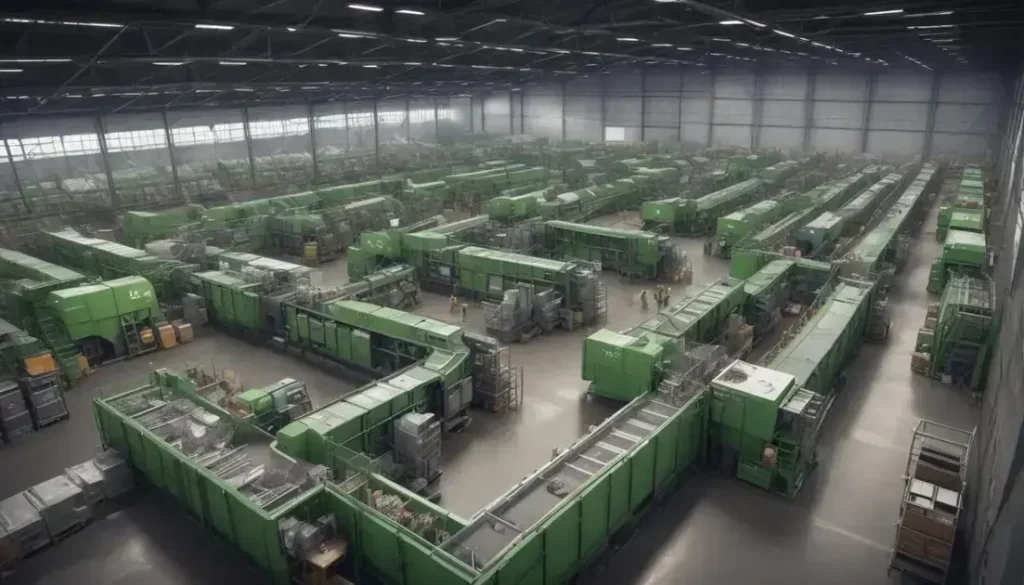Sustainable materials in textiles, such as recycled nylon and bio-based fabrics, significantly reduce environmental impact and promote a circular economy, making them essential for the future of the fashion industry.
Sustainable materials are revolutionising the textile industry. Have you ever wondered what this means for Australian businesses?
Collaborating for a circular economy
Collaboration is key in achieving a circular economy, where waste is minimised and resources are reused. Industry stakeholders must unite to create innovative solutions that promote sustainability and reduce environmental impact. Collaborative efforts can lead to sharing best practices, technologies, and strategies that facilitate the transition to a more sustainable future.
The importance of partnerships cannot be overstated; businesses are realising that working together enhances their capacity to develop and implement green materials and processes. For instance, companies can pool resources to invest in research and development, creating eco-friendly alternatives that are not only effective but also cost-efficient.
Moreover, educational initiatives play a vital role in shifting mindsets around waste and resource management. By engaging with consumers and communities, businesses can foster a culture that prioritises sustainability and encourages responsible consumption. Through collaboration, they can create awareness about the benefits of recycling and reusing materials, helping drive demand for circular economy products.
The future of sustainable materials in textiles
The textile industry is entering a new era focused on sustainable materials. This shift is driven by increasing consumer awareness about environmental issues and the need for businesses to adopt eco-friendly practices. Materials such as recycled fibres and organic cotton are becoming popular choices, as they minimise waste and reduce pollution.
Recycled nylon is leading the way in sustainable textiles. Made from post-consumer waste, it not only conserves resources but also decreases the energy needed for production. This innovation aligns perfectly with industry goals to reduce carbon footprints and enhance circularity.
Another significant trend is the development of bio-based materials, created from renewable resources. These fabrics are designed to be biodegradable, thus eliminating the problem of textile waste in landfills. As brands focus on transparency, consumers are becoming more educated about where their clothing comes from and the materials used.
Future advancements in sustainable materials are likely to involve collaboration between manufacturers, designers, and researchers. By sharing knowledge and techniques, the industry can further innovate and create textiles that balance aesthetics with environmental responsibility.
Embracing the Future of Sustainable Textiles
The future of the textile industry lies in adopting sustainable materials. As we have explored, innovations like recycled nylon and bio-based fabrics offer exciting opportunities for growth and environmental responsibility.
By choosing these materials, businesses can not only meet consumer demand but also contribute to a healthier planet. Collaboration among stakeholders is crucial to drive this transformation, ensuring that sustainability becomes the norm in fashion.
With a strong focus on eco-friendliness, the textile industry can lead the way towards a greener future. It is essential for everyone, from manufacturers to consumers, to embrace this commitment and make choices that support sustainability.
Frequently Asked Questions
What are sustainable materials in textiles?
Sustainable materials refer to fabrics that are produced with minimal environmental impact, such as recycled fibres, organic cotton, and bio-based materials.
How does recycled nylon benefit the environment?
Recycled nylon helps to reduce waste by repurposing materials that would otherwise end up in landfills, while also conserving resources during production.
Why is collaboration important in creating sustainable textiles?
Collaboration allows businesses to share resources, knowledge, and best practices, which drives innovation and accelerates the transition to a circular economy.
How can consumers contribute to sustainability in the textile industry?
Consumers can support sustainability by choosing brands that prioritize eco-friendly materials, recycling clothing, and being mindful of their purchasing habits.
What role do bio-based materials play in textiles?
Bio-based materials are derived from renewable resources, making them biodegradable and reducing reliance on fossil fuels, which benefits the environment.
What future trends should we expect in sustainable textiles?
Future trends may include increased use of smart textiles, advancements in eco-friendly production techniques, and greater transparency in supply chains.


